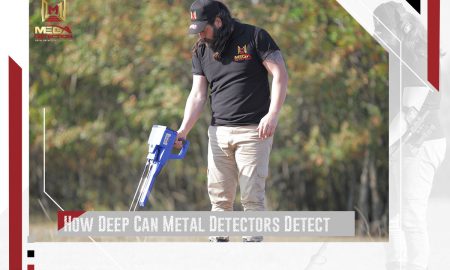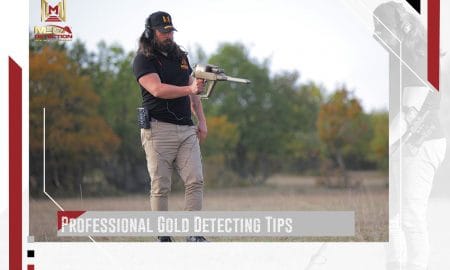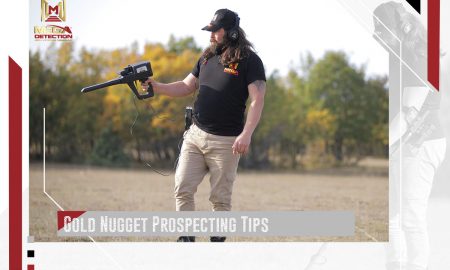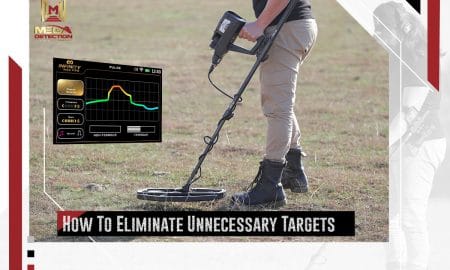Comparing VLF and PI Metal Detectors in Hot, Mineralized Soil
A question we often hear from metal detectorists is, “I don’t have access to a more-costly pulse induction (PI) detector. Will my very-low-frequency (VLF) machine work in heavily mineralized soil?”
What the detectorist is really asking is, “Is it even worth trying to use a VLF machine on mineralized soil, or am I wasting my time?”
The answer depends on a wide variety of factors, including the capabilities of the detector, the specific composition of the soil, and the skill of the detectorist.
It also depends on the expectations of the detectorist. Do you expect that a particular VLF metal detector might actually be able to detect almost everything a PI machine can detect?
Different Metal Detector Technologies
When deciding on a hobby metal detector you will likely run into three technologies – Beat Frequency Oscillation (BFO), Very Low Frequency (VLF), and Pulse Induction (PI). Each technology offers the user positives and negatives and may work better or worse depending on a number of factors. You will want to choose based on your hunting style, skill level, and/or detecting requirements. A question often asked is “how do you make that decision?” Read on to get a basic rundown of how each technology works and its most common use.
Beat Frequency Oscillation (BFO)
Hobby metal detectors in the BFO category are typically basic, user-friendly (‘turn on and go’) metal detection technology. There are two rings of copper coiled around iron or steel. A current of energy passes through them and transmitted into the ground. When the signal is broken or disturbed by metal, the detector creates an audible change in a sound audibly alerting the user to a potential target.
Because of how basic these detectors are, they are a great choice for novice detectorists who want to hunt in clean areas. Detectorists who are looking for an easy to use budget-friendly option may find them acceptable as well. The main thing to remember is that they will pick up on any metal in the ground without being able to tell the difference between a “good” or “bad” target. We currently do not carry any BFO metal detectors.
Very Low Frequency (VLF)
This type of metal detector uses two coils, one sends and the other receives, to pick up on targets in the ground. The sender coil creates a magnetic field that reacts to metal objects. When a target is found, a current is formed, the receiver coil takes the signal and amplifies it to be heard through a speaker or headphones. Many detectors can even translate the signal into a number based on how strong the magnetic current is.
Because of its ability to give information back on targets, there are lots of metal detectors that use VLF technology. The control box is where the magic happens with this type of detector. It interprets the signal and turns it into easy to understand visual and audio cues. Depending on how much work goes into the interface and controls, you can ignore targets you don’t want to dig, see about how deep a target is, change the sensitivity, and much more.
Pulse Induction (PI)
While the previous types of metal detector technologies used two coils working together, Pulse Induction (PI) can use one or more coils in a much different way. The coil sends out bursts of electronic currents that bounce back when it hits a metal object. The best way to think about PI is that it’s like a bat’s echolocation. There is no way to tell the difference between targets – just that there is one.
There are many metal detectors on the market for a wide range of needs and experience levels. It’s easy to get overwhelmed or choose one that does more than you will ever need it to. Finding the detector that fits your needs boils down to choosing the features you need.
Hunting in Mineralized Soil
The location selected for the test is arguably some of the most heavily mineralized soil in the state. It was entirely composed of the notorious red dirt/clay. It’s so intensely mineralized that it met the criteria to be called what locals call “blackjack.”
The entire site was also completely saturated with small iron square nails and other scrap iron detritus from a large structure of years long past, harkening back to the site’s well-established Civil War history.
Those like myself who have participated in the large Civil War relic-focused organized group detecting hunts in central Virginia know first-hand how dramatically the deeply mineralized soil and pockets of blackjack can affect detector performance. It’s simply an entirely different detecting world, which requires the detectorist to completely modify their approach and tactics.
I wanted this evaluation to really stress the machines in the worst-of-the-worst detecting conditions, and this site did not disappoint. The frosting on this gnarly detecting cake was the addition of a string of high-voltage power lines that ran directly along with the small site, radiating plenty of electromagnetic interference.
I began by performing a factory reset on all detectors to ensure they were all starting on a level playing field. Next was a thorough frequency scan/noise canceling to eliminate or at least reduce interference between the detectors themselves, the power lines, and the environment in general.
Due to the saturation of small iron targets throughout the site, a 2-foot by 2-foot patch of ground was designated and fully cleared of all targets (using all three detectors) and was used as the designated ground balance point throughout the hunt.
On to the Hunt
The VLF machines had their strengths and weaknesses, but they were indeed able to detect and correctly identify a number of targets in the mineralized conditions. The performance was not consistent, requiring my liberal digging of tentative targets, and detection depth was significantly reduced by the heavy mineralization. The somewhat surprising discovery.
In the end, my assessment of the question, “Is it even worth trying to use a VLF machine on heavily mineralized soil?” remains a qualified, yes. If you’re still unsure, consider renting a VLF metal detector before making a purchase.
I have historically fared well with single frequency VLF machines on heavily mineralized soil, sometimes even better than those with PI machines. Will a PI detector consistently perform better in mineralized conditions? Absolutely, hands down, no question about it.
There is no substitute, however, for knowing your machine inside and out and in all conditions. As the saying goes, success is ultimately determined by the 80/20 rule, which translates to 80 percent operator expertise, 20 percent detector capability. An experienced detectorist that is able to deftly wield a machine with which they are intimately familiar will be successful in almost any conditions.












Leave a Reply